Bli Komang took us along the main coastal road in eastern Bali where earlier that day he introduced us to what is now my favorite place on the island: Taman Ujung Sukasada. Passing by trucks loaded with high quality sand from the slopes of Mount Agung, we arrived in one of the most important puras for Balinese Hindus: Pura Goa Lawah. Under the midday sun people donning white ceremonial costumes and colorful sarungs gathered outside the temple, talking to each other at warungs, set against the coastline of the Lombok Strait.
With the help of Bli Komang we put our sarungs, lent by our trusted driver himself to avoid the occasionally persistent sarung vendors often found at temples all over the island. As we stepped inside the pura’s front yard, men carrying cymbals and gongs in different sizes were sighted while others assembled at a small wantilan, signs of an impending religious ceremony later on that day.
“People usually come to Goa Lawah before they hold a Ngaben ceremony for their deceased family members,” Bli Komang said to me explaining the temple’s significance in the Balinese cremation tradition. In fact, Pura Goa Lawah is one of the Sad Kahyangan, literally “six places of Gods”, a collective term to describe Bali’s holiest temples as the pillars of the island.
Due to its importance, the temple’s history is heavily enveloped with legend and symbolism. Nirartha, the Majapahit priest who fled Java to Bali in the 16th century and reformed Balinese Hinduism, was the one who discovered a cave at the eastern coast of Bali which would later become one of the most sacred places on the island. Upon his arrival loud sound emanated from the cave, breaking the silence in the otherwise secluded corner of Bali. Upon further inspection he found that it was the house for a huge number of bats, blanketing the cave’s ceiling in black, hence the name Goa Lawah – Bat Cave.
Bruce Wayne’s alter ego might be the first thing that conjures up in people’s minds when they think of bat cave. However this cave in Bali was purportedly the lair of a much fearsome and venerated creature: Vasuki, one of the most important nagas (dragons) in Hindu mythology. Made famous by its depiction in the story of the Churning of the Ocean of Milk – found as reliefs at Angkor Wat, statues at the entrance of Angkor Thom, also an artistic display at Bangkok’s Suvarnabhumi airport – Vasuki was believed to reside inside the cave and feed on the abundant bats that gave the cave its name.
Nobody in modern time has ever attempted to explore the cave, partly due to its sacredness as well as a form of respect – and fear – of whatever creature living inside. Legend has it that in the past the cave stretched all the way from Bali’s east coast to the holiest place on the island: the Mother Temple of Besakih on the slope of Mount Agung. However an earthquake in 1917 was believed to close the underground pathway, separating the two holy places forever.
We waited for Bli Komang to signal us to enter the temple grounds as we tried not to cause any disturbance to the ceremony preparation. After the troupe with traditional musical instruments entered though the main gate, Bli Komang waved at us from afar and we followed him right away. Inside, men and women, young and old, all sat on the ground facing the cave. Hindu priests and pristesses walked around the devotees while sprinkling holy water over their heads. Once sprinkled, hands were raised and eyes were shut, prayers were made.
“Look over there, you see those men with black headdresses inside the pavilion? They are the high priests,” Bli Komang explained while pointing his finger to a small pavilion on our far left side. A group of older priests in more elaborate costumes overlooked everyone at the temple grounds. Before the cave, offerings were prepared at the yellow cloth-covered altars. At times priests checked on them and lit incense sticks, a gesture to please the gods and spirits.
James and I stood still, witnessing one event unfolding after another from a safe distance near the entrance gate. As if he was able to read our minds, Bli Komang signaled us to move outside as more devotees congregated at the temple gounds. On our way back to the car Bli Komang suddenly stopped to chat with a young person in white robe. The two exchanged stories and smiles before parting ways.
“He was a friend of mine,” Bli Komang said to us. “When he was younger he often got sick. Then his parents took him to a medicine man who then told them that their son was meant to be a Hindu priest. At first his father was not happy to hear this, but since his sickness persisted eventually his father let go of his ego and allowed him to commence the lengthy process to become a priest. Now he is very healthy as you can see.”
Apparently Elizabeth Gilbert was not the only one who listened to a Balinese medicine man.
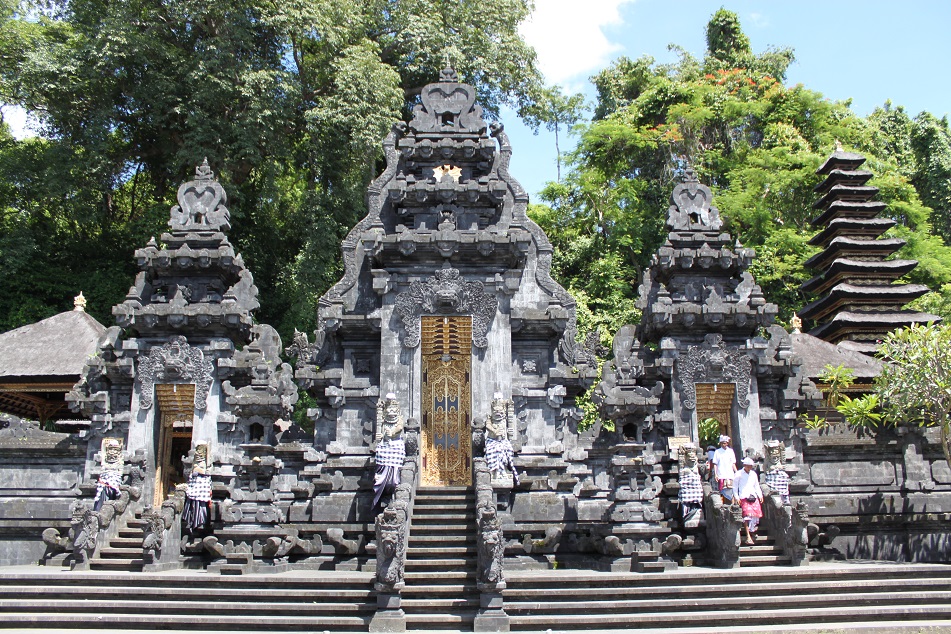


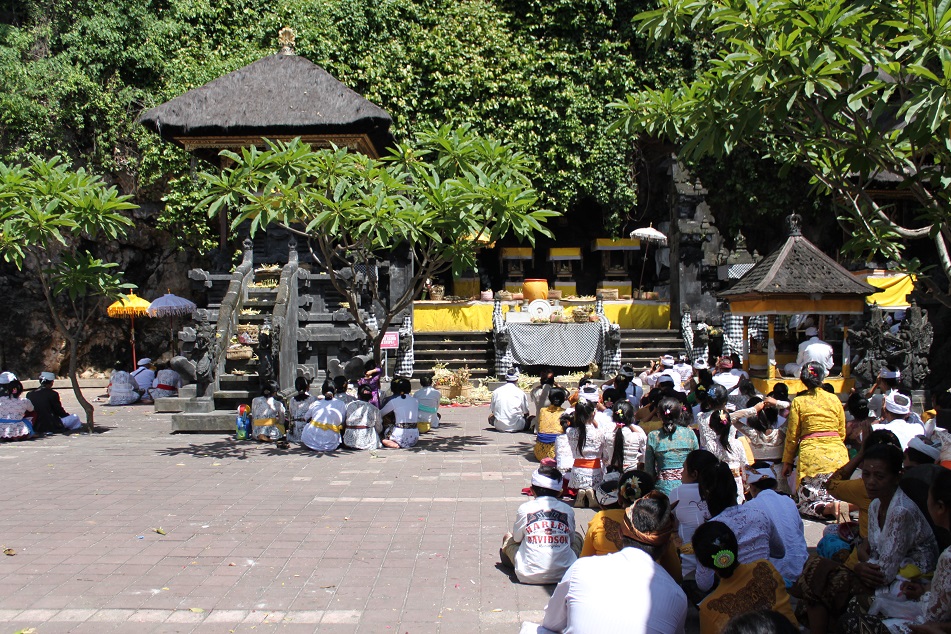
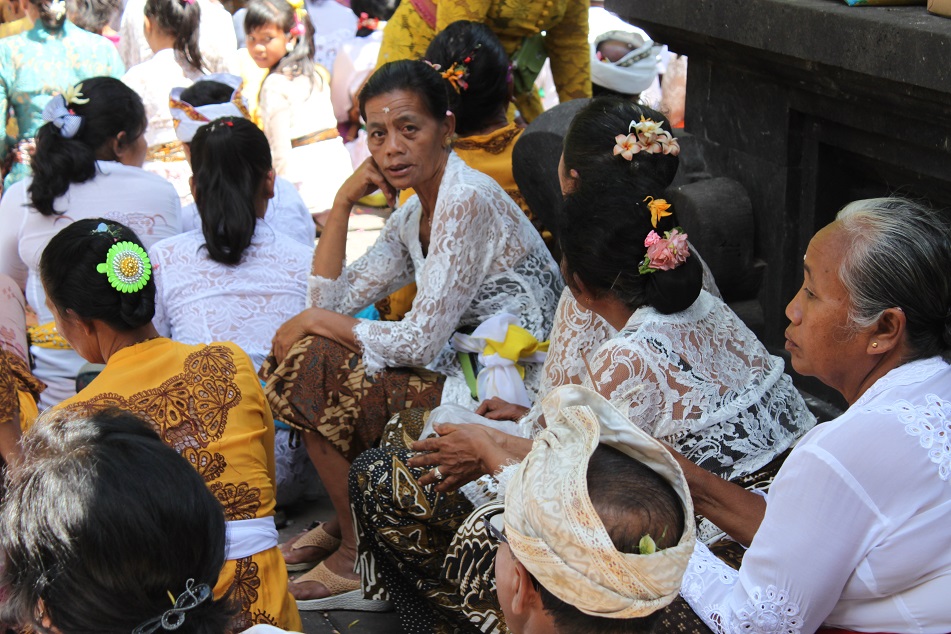
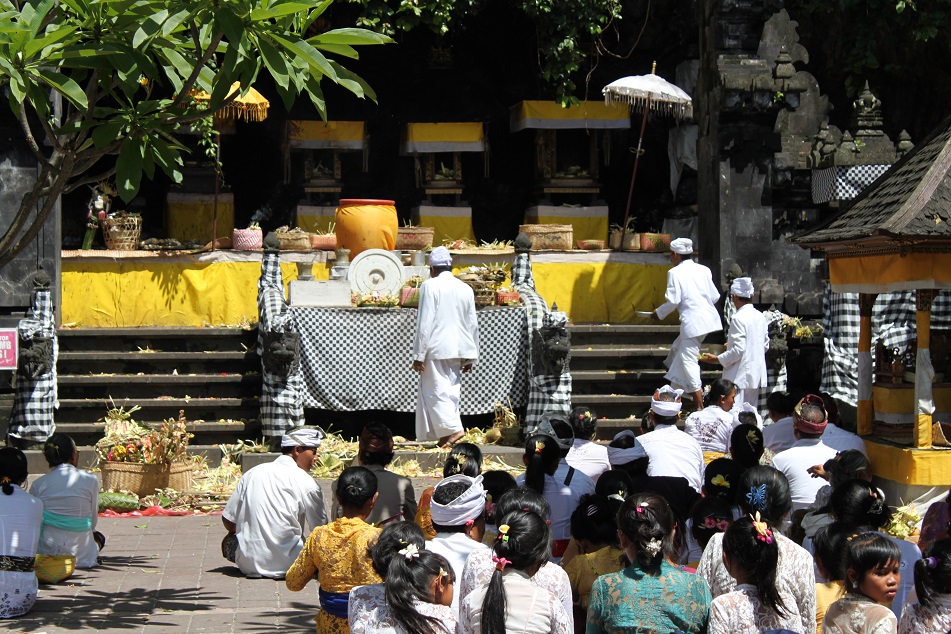

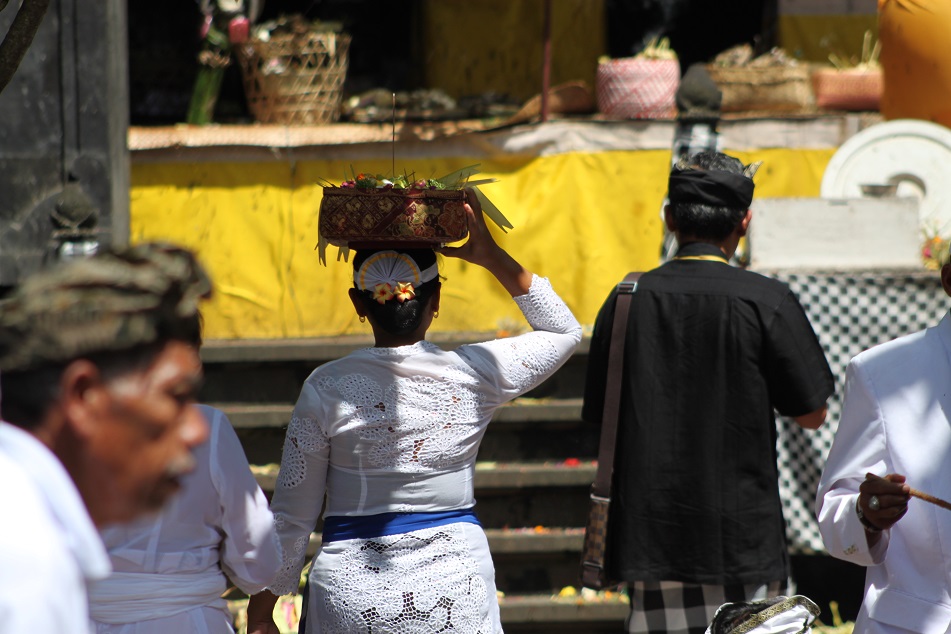
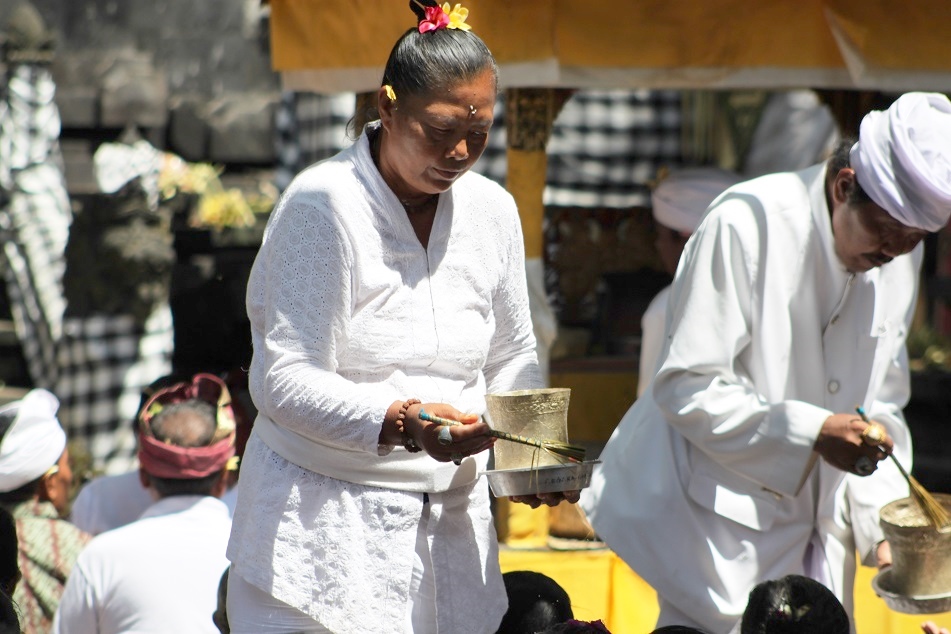
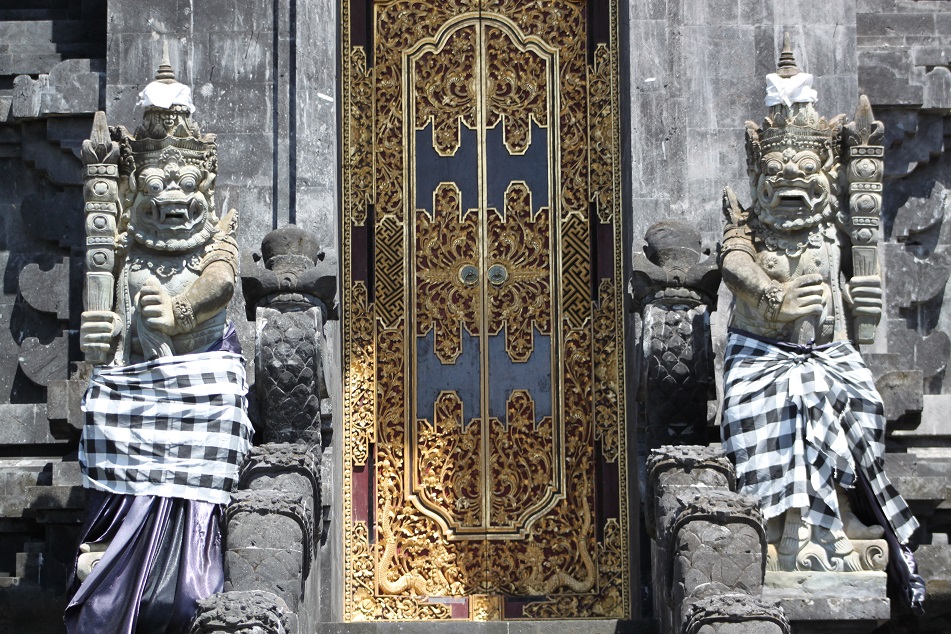
I love how you engaged with locals. Lovely story-telling and lovely pictures!
LikeLike
Thanks Robin! Sometimes it’s the locals that makes a place even more interesting. Speaking of which, your captures on Morocco are something to be looked forward to.
LikeLike
You continue ‘our’ heartening information-based trip around beautiful Bali with another great post, Bama. I love your congregation shots in the temple – and, by the way, seeing the priestess! 🙂
LikeLike
Thank you for such a lovely comment, Meredith. For me the most interesting aspect of the island is not its beaches, but its rich culture. Therefore on my last visit to the island two weeks ago to explore the north, I focused on the temples which were quite different from the other temples I’ve seen elsewhere in Bali. And yes, seeing that priestess was a rare and precious moment indeed. 🙂
LikeLike
A breathtaking piece filled with glorious gems! A rich culture and heritage, thank you for sharing!
Minnie
LikeLike
And thank you for visiting and leaving such kind words, Minnie. Bali’s cultural scene is arguably one of the richest in the country.
LikeLike
Bali. senibenni.com
LikeLike
Nice shots, Bama… Ahh ternyata bener aku kurang explore Bali, baca tulisan-tulisanmu yang mengedepankan budaya di sana yang ternyata nggak semuanya terkontaminasi budaya asing sungguh menarik hati dan kaki untuk segera melangkah ke sana 🙂
LikeLike
Thank you, Halim! Nah dua minggu yang lalu saya habis explore Bali Utara dan mengunjungi tiga pura yang cukup berbeda dibandingkan dengan pura di bagian Bali lainnya, baik dari filosofi, sejarah, maupun arsitekturnya. Asal menghindari tempat-tempat yang jadi magnet bagi wisatawan pada umumnya, Bali masih punya tempat-tempat menarik untuk dieksplorasi kok. 🙂
LikeLike
A gorgeous post, Bama, with wonderful portraits of the congregation – the devotion at Goa Lawah was truly palpable and we could not help but admire it all in silence. Plus it was an unexpected delight to see Bli Komang interacting with one of his childhood friends. 🙂
LikeLike
Thank you so much, James. I’m glad the timing was perfect for us to go there, plus there was a priestess who together with her male counterparts prepared the ceremony in such a colorful setting. Bli Komang’s encounter with his childhood friend was totally unexpected, but it added up a new aspect to our understanding of Balinese belief system.
LikeLike
Beautiful picture! I like it! Good week!
LikeLike
Merci Vivien! C’est gentil. Have a nice weekend too!
LikeLike
I never got to Goa Lawah, but as usual your pictorial story-telling is top banana! 😀
LikeLike
Thanks Lee. What a nice and fun comment you wrote! 🙂 Hopefully the next time you come to Bali you’ll have enough time to explore the temples in the eastern and northern parts of the island.
LikeLike
Thank you for another sumptuous account Bama. Witnessing those ceremonies must have been so rewarding. Glad to see a priestess in action. it is still uncommon for women to take part in Hindu rituals in India!
LikeLike
My pleasure, Madhu. Seeing the priestess in action was indeed one of the highlights of my visit to Pura Goa Lawah. However later on the trip I witnessed another priestess leading a ceremony before a traditional dance performance was played. It appears that women in Bali enjoy a relatively equal position with their male counterparts.
LikeLike
Reblogged this on Wander, Don't Wonder and commented:
Bali.
LikeLike
Reblogged this on abbott18.
LikeLike
beautiful ceremony!
LikeLike
It really was. Balinese people are very proud of their traditions and that’s exactly what makes Bali such a unique island.
LikeLike
Amazing photos, I like how you get involved. Very inspiring for someone like me who loves to travel! Thanks!
LikeLike
Thank you. Getting to a place is one thing, getting a local perspective would leave you enriched. Happy traveling and stay safe!
LikeLike
Reblogged this on Inselberichte.
LikeLike
Lovely photos, Bama 🙂
LikeLike
Thank you, Marianne. 🙂
LikeLike
I love reading your blog. It is like taking a new free vacation with every post I read, all from the comfort of my home. Because I like it so much I have nominated you for the One Lovely blog awards and I truly hope that you will accept the award. Here are the rules: http://alexisfashiona.com/2014/08/10/fashion-a-now-a-one-lovely-blog/
Yours truly,
Alexis
LikeLike
Hi Alexis. I’m glad you enjoyed this blog and thank you so much for your appreciation and the award nomination! It’s really kind of you. 🙂
LikeLiked by 1 person
No problem ^_^
LikeLike
Lagi googling2 tentang Bali, eh nyampe di mari.
Turned out this beautiful piece was written by someone familiar toh ya, haha.
LikeLike
Hi Firzie, you’re so kind. Thanks! Anytime you need any info on Bali just let me know, I’m just a few steps away, literally.
LikeLike
Pingback: A bat cave like no other | The Kellett Digest
Reblogged this on maverickbird.
LikeLike